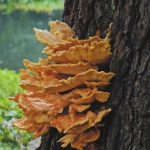 Music
Music  Music
Music  History
History 10 Less Than Jolly Events That Occurred on December 25
 Weird Stuff
Weird Stuff 10 Funny Ways That Researchers Overthink Christmas
 Politics
Politics 10 Political Scandals That Sent Crowds Into the Streets
 Weird Stuff
Weird Stuff Ten Bizarre Facts About The Doge Meme
 Our World
Our World 10 Ways Your Christmas Tree Is More Lit Than You Think
 Movies and TV
Movies and TV The 10 Coolest Stars to Set Sail on The Love Boat
 History
History 10 Things You Didn’t Know About the American National Anthem
 Technology
Technology Top 10 Everyday Tech Buzzwords That Hide a Darker Past
 Humans
Humans 10 Everyday Human Behaviors That Are Actually Survival Instincts
 Music
Music 10 Surprising Origin Stories of Your Favorite Holiday Songs
 History
History 10 Less Than Jolly Events That Occurred on December 25
 Weird Stuff
Weird Stuff 10 Funny Ways That Researchers Overthink Christmas
Who's Behind Listverse?

Jamie Frater
Head Editor
Jamie founded Listverse due to an insatiable desire to share fascinating, obscure, and bizarre facts. He has been a guest speaker on numerous national radio and television stations and is a five time published author.
More About Us Politics
Politics 10 Political Scandals That Sent Crowds Into the Streets
 Weird Stuff
Weird Stuff Ten Bizarre Facts About The Doge Meme
 Our World
Our World 10 Ways Your Christmas Tree Is More Lit Than You Think
 Movies and TV
Movies and TV The 10 Coolest Stars to Set Sail on The Love Boat
 History
History 10 Things You Didn’t Know About the American National Anthem
 Technology
Technology Top 10 Everyday Tech Buzzwords That Hide a Darker Past
 Humans
Humans 10 Everyday Human Behaviors That Are Actually Survival Instincts
10 Crazy Facts about Cycads That Might Surprise You
Cycads are famous for being ancient. However, this isn’t the plant’s only claim to fame. Despite looking like a peculiar (but boring) tree, cycads offer an unexpected trove of oddball facts.
Whether it’s unusual biology, history, misconceptions, or unique records, cycads have them all. From a cycad monument destroyed by scientists to the respect cycads have for their siblings, here are ten ways these stocky wonders might surprise you today.
Related: 10 Ways Plants Try to Defend Themselves from Being Eaten
10 They Are Not Living Fossils
Animals like the coelacanth and horseshoe crab are often described as “living fossils.” Such species are believed to have survived from prehistory to the present with little change to their physical appearance. Many people are also quick to call cycads living fossils, but this label doesn’t quite do their story justice.
True, cycads are mind-numbingly old. The first ones sprouted 280 million years ago, long before the first T-Rex walked the Earth. But here’s the catch. They are not the same plants that we see today. A large genetic study by Harvard University found that modern cycads are only 12 million years old.
Due to this broken lineage, cycads are not living fossils. They are more like evolutionary comebacks that have survived several ups and downs over the eons, with old species vanishing and new ones appearing.[1]
9 South Africa Fights Poachers with Isotopes
South Africa is a cycad hotspot, boasting 38 indigenous species. Among these, 12 are critically endangered, and 3 are extinct in the wild. One of the biggest threats that undermine conservation is the landscaping business.
Homeowners want rare and large cycads and are willing to pay an expensive pricing system that charges you by the inch. A rare, tall plant can easily sell for R400,000 (about $22,266). This gives poachers an incentive to strip wild-growing cycads and raid botanical gardens.
To prosecute buyers, authorities must prove that a cycad was taken from the wild, which is illegal in South Africa. This is difficult as poachers often find ways around official methods to identify wild populations (such as microchipping the plants).
In 2014, the University of Cape Town and the South African National Botanical Institute joined forces to use radiocarbon dating and stable isotopes as a foolproof method to identify trafficked cycads. It involves taking stem tissue from a suspicious plant and viewing its chemical signature to pinpoint where it originally grew.
This method is already used to trace bank notes, explosives, and cocaine, making it the most hopeful tagging system yet for cycad identification.[2]
8 Cycads Heat Up During Reproduction
In the past, researchers falsely believed that cycads depended on wind to carry pollen from male to female plants. However, recent studies showed that cycads have a much more complicated romantic relationship, one that involves flying insects called thrips and not wind pollination.
Cycad courtship starts with the male. Since thrips feed on cycad pollen, the male will advertise that he has plenty of yummy dust by releasing an enticing odor that attracts these insects. While they feast, they get covered in pollen–and that’s when the cycad kicks them out. The plant heats up to produce and emit a toxic chemical that leaves the thrips with no choice but to flee for their lives.
Next, the female cycad pulls the wool over the insects’ eyes. She pretends to be a pollen-filled male by releasing the same attractive odor. But once the thrips land, they find no food, only egg-filled cones, which they unwittingly fertilize by rubbing pollen everywhere as they search for a snack inside the cones.[3]
7 Cycads Caused a Mystery Disease
For years, the Chamorro people of Guam suffered from a mysterious and devastating brain disease. Symptoms included weakness, paralysis, and dementia. Up to a third of every village was affected, and with so many people developing ALS-PDC (amyotrophic lateral sclerosis-Parkinsonian dementia complex), the rush was on to identify the cause.
Since Chamorro populations outside of Guam didn’t have the same high number of cases, researchers suspected that something in the island’s environment was causing ALS-PDC. More precisely, the local habit of eating flying foxes. These massive bats are boiled whole and served at celebrations, feasts, and religious events. The bats, in turn, love to eat cycad seeds—and this was a red flag.
Cycad seeds contain neurotoxins that are detrimental to humans. Since bats gorge on this food source and only excrete about 10% of the toxins, their bodies are laced with poison. This could also explain why men are three times likelier to contract the disease, as they commonly consume the whole bat, even the brains, wings, and fur. Women prefer to eat only the breast meat.[4]
6 A Mysterious Cycad That Lives in Trees
Epiphytes are plants that grow in the sky. They use their roots to cling to other plants, especially tall trees. This clever survival strategy allows small plants in shaded forests to position themselves higher and get more sunlight.
Cycads appear too bulky to be botanical monkeys, but surprisingly, there are two epiphytic species. Panama is home to one of them, Zamia pseudoparasitica. For years, researchers had so many questions. How did it spread seeds up there? How did the seeds find ideal nooks in the tree canopy to germinate?
In 2019, a team placed camera traps at three sites where Z. pseudoparasitica grew. For months, the devices filmed several types of animals visiting the cycads. However, only one species stuffed its cheeks with the seeds and ran off with them, solving the seed dispersal mystery.
The critter was the northern olingo, an adorable branch-hopping mammal known for moving seeds around forest tree canopies. It’s also likely that olingos are placing the seeds in “storage” around the tree tops, with some of these locations perhaps offering the ideal circumstances for new cycad seedlings to take root.[5]
5 The Ill-Fated Cycad Monument
During the 1890s, a remarkable slice of prehistory was discovered in the Black Hills of South Dakota. Erosion had exposed a massive fossil cycadeoid forest dating back to the Cretaceous period (roughly 120 million years ago). In 1922, recognizing the discovery’s significance, President Warren G. Harding declared the site a national monument.
The Fossil Cycad National Monument had one purpose: to protect the fossils. To say that it failed is an understatement. Right after the sanctuary was created, the plundering began.
However, no poachers or tourists made off with the cycad fossils. Nope. This time, scientists did the damage. Thousands made the trip to pluck an ancient specimen from the earth and take it back to their research lab or museum.
A few years later, so few fossils remained that authorities couldn’t see a reason to keep the 320-acre monument any longer. On September 1, 1957, the Fossil Cycad National Monument was officially voted out of existence by the United States Congress.[6]
4 Cycads Saved This Japanese Island
Cycads are toxic to humans. But for centuries, on the Japanese island of Amami Oshima, people have prepared this deadly plant as a meal without fatalities. This isn’t thrill-seeking. When the island was under the yoke of harsh samurais and during both World Wars, supplies were often withheld from Amami Oshima. When this happened, the local cycads served as a famine food and saved the people from starvation.
The process involves hacking the trunk apart to harvest the flesh inside. The pith is then ground into flour and repeatedly washed and dried to rid the powder of toxins. It can take up to four weeks to make the flour safe to eat. But once ready, the resulting starch is added to rice or turned into noodles.
This unique ancient tradition is dying out. The island is mostly home to elderly villagers who deem it unnecessary to teach the next generation how to make cycad flour. The elders appreciate its life-saving history, but the preparation is too labor-intensive, and venomous snakes can be encountered during harvests. Additionally, the islanders feel that these are times of plenty, so why tackle the colossal effort of making cycad noodles when you can boil the two-minute variety?[7]
3 The Oldest Potted Plant Is a Cycad
In 1755, Francis Masson was hired as a plant collector for the Kew Botanical Gardens in the UK. He traveled to South Africa and uprooted an Eastern Cape giant cycad (Encephalartos altensteinii). Since E. altensteinii can live for 2,500 years, it should come as no surprise that the Kew cycad is still alive almost 270 years after Masson brought it to England.
Once potted and installed in its new home, the plant lived through some interesting times. It saw the French Revolution, the appearance of the first steam engine, both World Wars, and humans stepping foot on the Moon. Incredibly, the cycad survived around 30 powerful bombs that were dropped on Kew during World War II.
In 2009, the botanical garden repotted the now monster-sized cycad, an undertaking that took three months of planning due to the plant weighing over a ton and standing roughly 14 feet (4.2 m) tall. Today, this pampered cycad is believed to be the world’s oldest potplant, and if everything goes well, it will keep its title for centuries to come. [8]
2 One Species Is Just Clones
In 1895, a botanist called John Medley explored the Ngoye Forest in South Africa when he found a new cycad species. He scoured the area for more specimens but found none.
Medley likely found the last cycad of its kind, later named Encephalartos woodii. Inspired to preserve this ultra-rare species, conservationists returned to the spot for decades, taking cuttings and spreading its “babies” across the world. Today, these specimens are so valuable that some botanical gardens keep their E. woodie in cages with alarms to scare off poachers.
In 1916, the original cycad was moved to a protected location in Pretoria, South Africa. This made E. woodie officially extinct in the wild.
Researchers are hopeful that another specimen is out there and fingers crossed, everyone is hoping for a female. Since the original cycad is male and all the cuttings are clones, the entire present population of E. woodie is male. Finding a female means that the species can propagate naturally again and also strengthen its genetic pool.[9]
1 They Respect Their Siblings
It’s a well-established fact that certain plant species recognize their kin. Curious to see if cycads also had this ability, the University of Guam designed a simple but effective experiment. The species they selected for the study was Cycas micronesica, an endangered plant native to western Pacific Micronesian islands.
Scientists planted baby cycads in containers, two to a box. They were given limited rooting soil, a move designed to force the plants to react to each other as they grew. Would the plants co-exist peacefully (because they’re related) or fight for root space (because they’re not family)?
Interestingly, seedlings from the same mother plant appeared to recognize the roots of their siblings and responded with reduced competitive growing traits despite being forced to compete for limited resources. In essence, they protected their own. But they weren’t that nice to other cycads. When unrelated seedlings were planted together, it was every man for himself.[10]








